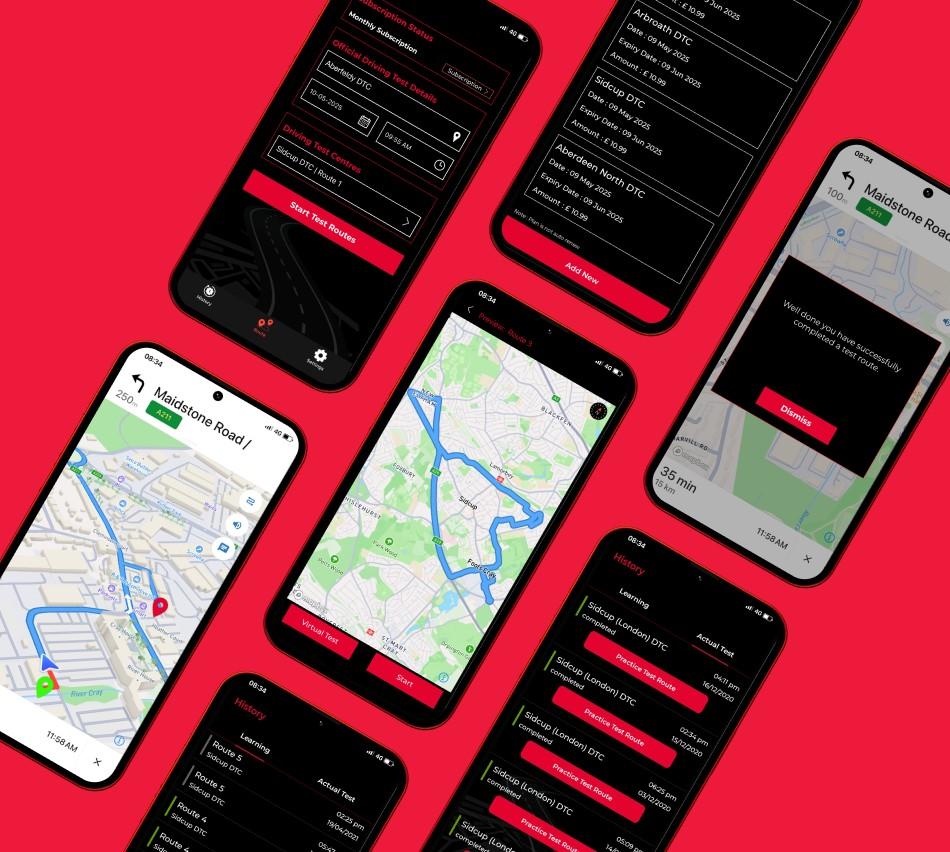No More Mistakes with Flour Mill Machine Manufacturer
Mar 11 2023

Passing the UK practical driving test is a major milestone, marking independence after months of lessons and practice. However, it is not easy—only about half of learners pass on their first attempt, which makes the experience stressful for many. The key to success lies in thorough preparation, consistent practice, and staying calm on the day.
In this guide, we’ll share essential tips to help you pass with confidence, plus show how the best driving apps UK learners use and free downloadable test routes can support your preparation.
Every confident driver starts as a beginner. The first step in your journey is building a solid foundation of skills and knowledge.
According to the Driver and Vehicle Standards Agency (DVSA), most learners need around 45 hours of professional driving lessons, along with 20 to 22 hours of private practice, before they are test ready. This shows that passing is not about rushing but about steady learning.
Professional lessons are vital because instructors know the exam standards and can correct mistakes quickly. Alongside this, practising with a friend or family member (who meets the legal requirements to supervise) helps reinforce skills. If you can practise shortly after your lessons, you are more likely to remember and apply what you have learnt.
It is also important to choose the type of car that suits you. Some people prefer learning in a manual because it gives them more flexibility with their licence. Others may find learning in an automatic less stressful as it removes the need to worry about gears. Either option is fine, but make sure you are comfortable with your choice.
Finally, do not just focus on the car. Study the Highway Code, learn road signs, and practise hazard perception online. A strong understanding of theory will improve your practical driving because you will be more aware of the rules of the road.
Whether you are taking your test in a manual or an automatic, the examiner will expect the same level of safety, observation, and control. However, the areas you need to focus on can be slightly different.
Focus Area | Manual Car Tips | Automatic Car Tips | Common Tips for Both |
Key Skills | Clutch control, smooth gear changes | Smooth braking, steady speeds | Safe observations, confidence |
Manoeuvres | Hill starts, reversing, three-point turns | Same manoeuvres without gear worries | Bay parking, parallel parking, pulling up on the right |
Test Day Challenges | Nervous about stalling? Take your time and stay calm | Do not underestimate the test just because gears are not involved | Keep mirror checks regular and lane discipline strong |
The key is to practise as many scenarios as possible, from different junctions to busy roundabouts, so nothing surprises you on the day.
In today’s world, learner drivers have more resources available than ever before. Many learners now turn to apps and online tools to support their preparation.
The best driving apps UK learners use often include features like:
Another valuable feature is the ability to download driving test routes for free. By doing this, you can practise the actual routes commonly used in test centres. This helps reduce uncertainty on the big day because you are already familiar with many of the roads, junctions, and roundabouts you might face.
Digital tools should not replace professional instruction, but they can make your preparation much more effective. They give you the chance to practise at your own pace, review problem areas, and feel more confident before stepping into the car.
The day of your test is naturally nerve-racking, but a calm and organised routine can make all the difference.
During the test, try to stay relaxed. If you make a mistake, do not panic—many minor mistakes are not an automatic fail. The key is to correct yourself safely and move on.
Even skilled learners can slip up on the day. Here are the most common mistakes and how to avoid them:
By being aware of these pitfalls, you can avoid the common reasons many learners fail.
Mock tests are one of the best ways to prepare for the real thing. They give you the experience of being assessed under pressure and highlight areas for improvement.
Ask your instructor to run a full-length mock test without offering guidance, so you get a true sense of what the real exam will feel like. Practising in different conditions—such as at night or in the rain—will also help you feel ready for anything. Using driving apps and the option to download driving test routes for free can make mock tests more realistic, boosting confidence before test day.
If you pass, congratulations! But remember, the learning does not stop there. Newly qualified drivers often need to build confidence in real-world conditions, such as motorways or long-distance driving.
If you do not pass, try not to be discouraged. Treat the feedback as a learning tool. Review the examiner’s notes with your instructor, practise weak areas, and treat your next test as another step forward. Many people pass on their second attempt once they know what to expect.
Passing your driving test comes down to preparation, practice, and confidence. From developing skills in lessons to making use of the best driving apps UK learners rely on, each step strengthens your readiness. Tools that let you download driving test routes for free give you a practical advantage, allowing you to rehearse real routes and reduce uncertainty on test day. Remember, examiners are not expecting perfection—they want safe, controlled, and aware driving. With calm focus and consistent practice, success will follow. For trusted resources that help learners gain confidence and pass with ease, Test Routes is here to support you.
Social Media Marketing Strategies for Beginners
Mar 14 2023
(0) Comments